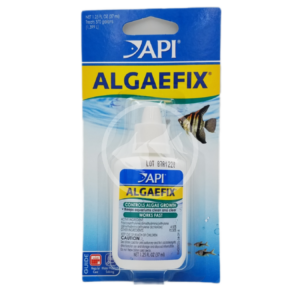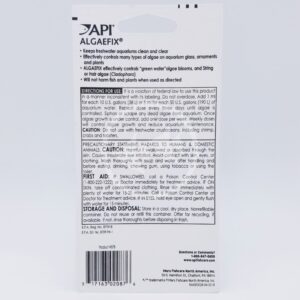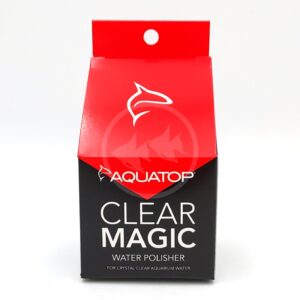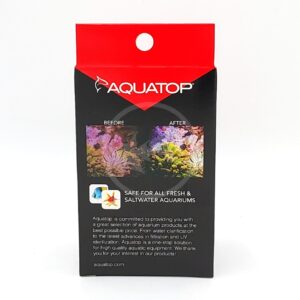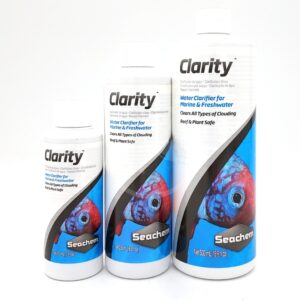Cloudy Water Conundrum
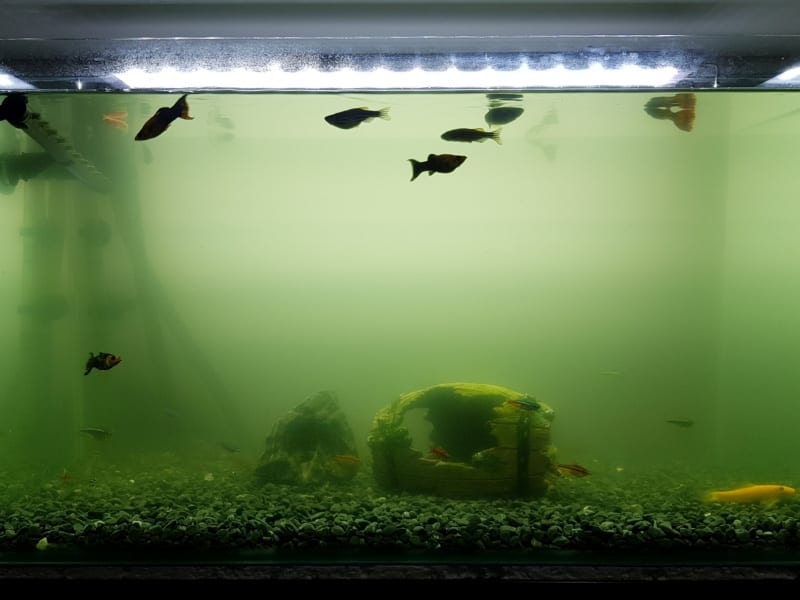
We all seem to encounter this at least once in the hobby: cloudy water. While frustrating and unappealing, there’s no need to fret! This blog post will provide guidance on the various causes of cloudy water and how to fix each.
ALGAE BLOOMS
The water itself appears as a ‘cloudy’ green.
CAUSES
Blooms of algae in the water column may be one of the toughest to pinpoint, as some appear for no clear reason or change to routine. With that said, two main causes for algae blooms in most circumstances are: excess nutrients (high nitrates, overfeeding, overdosing additives (i.e., planted aquarium elements such as nitrogen and phosphorus) and excess light (natural or artificial).
AVOIDING ALGAE BLOOM
Be certain you are not overfeeding your aquarium and to regularly check water parameters to ensure your maintenance schedule is keeping up with the bioload of your aquarium. Put lights on timers so that they are not being left on for more than 8 hours per day. If your aquarium gets some natural light from a window, opt to leave the lights off during that period of the day and only turn them on in the evening.
ALGAE BLOOM CURES
If you have an algae bloom, there are a couple of methods you can try to resolve it.
BLACK OUT PERIOD
Leave the lights off for 5 days in a row. Cover the tank with a sheet or blanket if it gets a lot of natural light from a window. No feeding will occur during this period of time, and you need to be certain a lot of aeration is provided because of the die off of algae. While this method is free, it can be one of the least effective options (works on some algae and not on others). We also do not recommend this option if you have a planted aquarium or fish with high metabolisms.
UV STERILIZER
The 100% effective option to see results and keep algae away for good with continued use. UV sterilizers eliminate each individual algal spore when it comes into contact with the ultraviolet light bulb within the filter.
AQUATOP CLEAR MAGIC WATER POLISHER
An inexpensive and fast acting approach. Unlike all other flocculants we have tried, this one does have a high efficacy towards algae spores. You will need to follow up with water changes and filter cleanings to ensure that the spores are then removed from the system.
SUSPENDED PARTICLES
May be confused with a bacterial bloom, as this too can make the water itself appear as ‘cloudy,’ but the particles themselves are more obvious to the naked eye.
CAUSES
Particles are often associated with newly set-up aquariums and usually settle out on their own in a matter of days. In established tanks, they may be a sign of clogged filter pads or that the filter pads are not fine enough to catch that particle size.
AVOIDANCE
Routinely rinsing/changing filter pads and utilizing several different micron-sized filter pads to ensure the trapping of various particles.
SUSPENDED PARTICLES CURES
If you have exhausted the filter pad suggestions listed, it could be that the filter pads are not effectively trapping the particles due to their same charge (both are negative). imposing a positive charge onto the suspended particles to draw them to the filter pads to get caught (opposites attract, after all). As a result, your water clears up! This product is safe for both freshwater and saltwater use, and could be used in some of the other scenarios above if you aren’t entirely sure the cause for your cloudy water.
SEACHEM CLARITY
Price range: $5.99 through $19.99BACTERIAL BLOOMS
Can vary, but often makes the water itself appear as a ‘cloudy’ white/milky color. Bacterial blooms often coincide with a spike in ammonia and action should be taken to correct this.
BACTERIAL BLOOM CAUSES
Be certain you are not overfeeding your aquarium and to regularly check water parameters to ensure your maintenance schedule is keeping up with the bioload of your aquarium. One of the most common causes for cloudy water, bacterial blooms often develop in response to an excess of nutrients (high nitrates, overfeeding/uneaten food), dead fish or plant matter, over cleaning or as a result of a cycling aquarium.
AVOIDING BACTERIAL BLOOM
If your aquarium is cycling, it is just best to leave the tank on its course to establish itself. The fish selected to break in the tank are hardy enough to endure these cyclical periods. If a tank encounters a bacterial bloom long after it is established, the effect of a spike in ammonia could be of concern for more sensitive fish and invertebrate species. To avoid, ensure that you are not overfeeding your aquarium, make sure that extra food is not accumulating on the gravel, and regularly test your water parameters to check that nitrate levels are within reason. Observe your fish daily and remove any that may have unfortunately passed on. Prune dead or decaying plant leaves frequently. Never change all of the gravel out of an established aquarium at once. This is a leading cause for bacterial blooms.
BACTERIAL BLOOM CURES
If you encounter a bacterial bloom in your established tank, take these steps: first, test your water parameters to see to what extent levels are at (i.e., ammonia, nitrite, nitrate). Depending on that result, it may be advantageous to do a small, partial water change ONLY of the water to reduce the concentration of these nutrients. Do not disturb or clean the gravel. Feed a little more sparingly during this time as your tank tries to find its equilibrium again. And finally, we highly recommend picking up some beneficial bacteria (Fritz is our favorite) to dose and help get the aquarium back on track faster. In some instances, we have seen this product help clear up issues in 48 hours! Given this product is natural, it’s safe for all fish, invertebrates and plants and can’t be “overdosed.”
